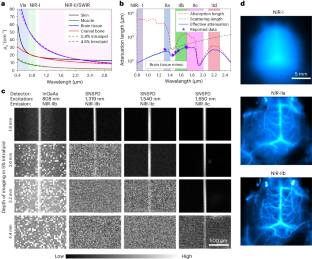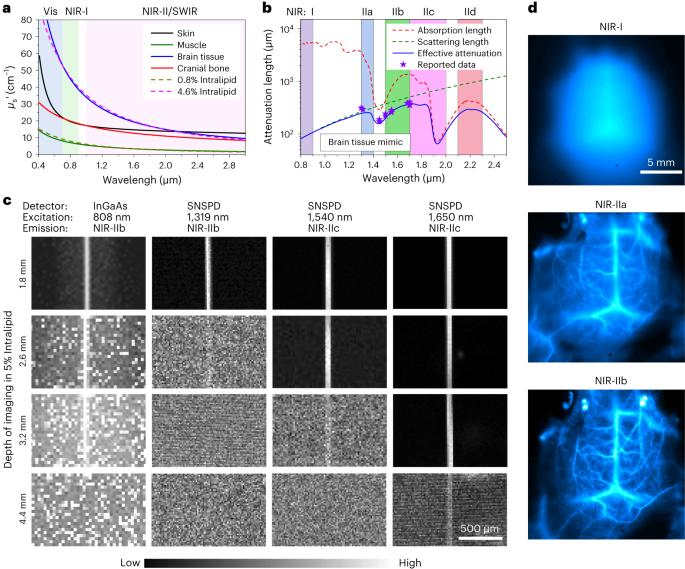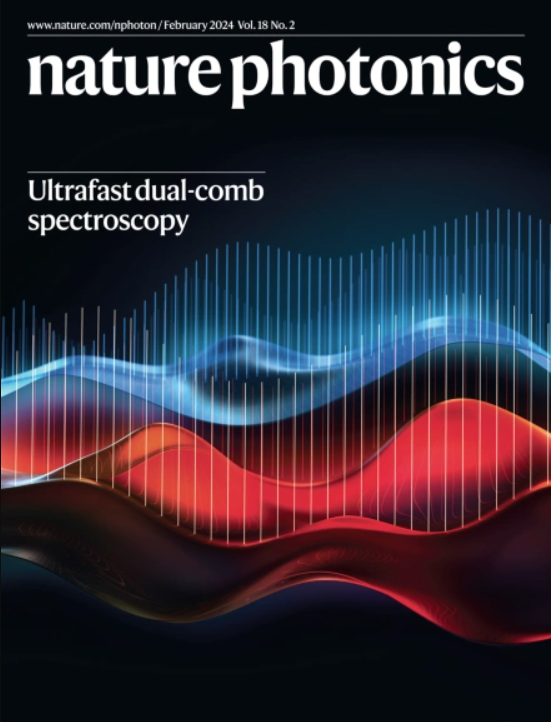In vivo NIR-II fluorescence imaging for biology and medicine
IF 32.3
1区 物理与天体物理
Q1 OPTICS
引用次数: 0
Abstract
Owing to reduced light scattering and tissue autofluorescence, in vivo fluorescence imaging in the 1,000–3,000-nm near-infrared II (NIR-II) spectral range can afford non-invasive imaging at depths of millimetres within biological tissue. Infrared fluorescent probes labelled with antibodies or other targeting ligands also enable NIR-II molecular imaging at the single-cell level. Here we present recent developments in the design of fluorophores and probes emitting in the NIR-II window based on organic synthesis and nanoscience approaches. We also review advances in NIR-II wide-field and microscopy imaging modalities, with a focus on preclinical imaging and promising clinical translation case studies. Finally, we outline current issues and challenges for the wider adoption of NIR-II imaging in biomedical research and clinical imaging. A review of NIR-II fluorescence imaging is presented, with a focus on fluorophores, probes and imaging techniques.


用于生物学和医学的体内近红外-II 荧光成像技术
由于光散射和组织自发荧光的减少,1000-3000 纳米近红外 II(NIR-II)光谱范围内的活体荧光成像可在生物组织内几毫米的深度进行无创成像。用抗体或其他靶向配体标记的红外荧光探针也能在单细胞水平上进行近红外 II 分子成像。在此,我们将介绍基于有机合成和纳米科学方法设计近红外-II 窗口荧光团和探针的最新进展。我们还回顾了近红外-II 宽场和显微成像模式的进展,重点是临床前成像和有前景的临床转化案例研究。最后,我们概述了在生物医学研究和临床成像中更广泛地采用近红外-II成像的当前问题和挑战。
本文章由计算机程序翻译,如有差异,请以英文原文为准。
求助全文
约1分钟内获得全文
求助全文
来源期刊

Nature Photonics
物理-光学
CiteScore
54.20
自引率
1.70%
发文量
158
审稿时长
12 months
期刊介绍:
Nature Photonics is a monthly journal dedicated to the scientific study and application of light, known as Photonics. It publishes top-quality, peer-reviewed research across all areas of light generation, manipulation, and detection.
The journal encompasses research into the fundamental properties of light and its interactions with matter, as well as the latest developments in optoelectronic devices and emerging photonics applications. Topics covered include lasers, LEDs, imaging, detectors, optoelectronic devices, quantum optics, biophotonics, optical data storage, spectroscopy, fiber optics, solar energy, displays, terahertz technology, nonlinear optics, plasmonics, nanophotonics, and X-rays.
In addition to research papers and review articles summarizing scientific findings in optoelectronics, Nature Photonics also features News and Views pieces and research highlights. It uniquely includes articles on the business aspects of the industry, such as technology commercialization and market analysis, offering a comprehensive perspective on the field.
 求助内容:
求助内容: 应助结果提醒方式:
应助结果提醒方式:


